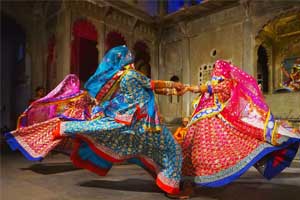Easter is one of the most important and widely celebrated Christian festivals around the world. […]
![]()

Culture and Tradition: The Backbone of Societies
Culture and tradition play a vital role in shaping societies across the globe. They are the backbone of every civilization, shaping the way people live, think, and behave. Culture encompasses the values, beliefs, customs, and traditions of a particular community, while tradition refers to the practices and customs that have been passed down from generation to generation.
Culture and tradition are significant because they help people to understand their history, roots, and identity. They provide a sense of belonging and enable people to connect with their past, present, and future. Moreover, they help to preserve knowledge, skills, and practices that are essential to human survival and well-being.
Every culture and tradition has its unique features that make it distinct from others. They reflect the diversity and richness of human experiences and provide a unique perspective on the world. Culture and tradition are also dynamic and evolve over time. They adapt to changing circumstances and reflect the shifting attitudes and beliefs of people.
The preservation of culture and tradition is crucial to maintain the diversity of the world’s societies. However, the rapid pace of globalization and modernization is threatening many of the world’s traditional cultures. Many communities are losing their languages, customs, and traditions as they adopt modern ways of life.
Therefore, it is essential to promote and preserve traditional cultures and practices to ensure the continuity of human heritage. Governments and organizations can play a crucial role in preserving traditional cultures by supporting cultural events, museums, and educational programs that promote awareness and appreciation of traditional cultures.
In conclusion, culture and tradition are an integral part of human societies, shaping the way people live, think, and behave. They reflect the diversity and richness of human experiences and provide a unique perspective on the world. Therefore, it is crucial to promote and preserve traditional cultures to ensure the continuity of human heritage.
Easter is one of the most important and widely celebrated Christian festivals around the world. […]
![]()
Ramadan is one of the most sacred months in the Islamic calendar. It is a […]
![]()
The life of a woman slave has always been defined by hardship, oppression, and resilience. […]
![]()
Fashion is more than fabric — it’s a cultural expression that reflects identity, tradition, and […]
![]()
Food is more than just sustenance; it is a reflection of culture, geography, climate, and […]
![]()
The Vedic Civilization, also known as Arya Sabhyata, is one of the oldest and most […]
![]()
Vatican City, the world’s smallest independent state, is the spiritual and administrative heart of the […]
![]()
India is a land of diversity, and its dance forms reflect the rich cultural heritage […]
![]()
India is a country of diverse cultures, languages, and traditions, and this diversity is vividly […]
![]()
Cultural History of India: India is a land with a rich and diverse cultural history […]
![]()